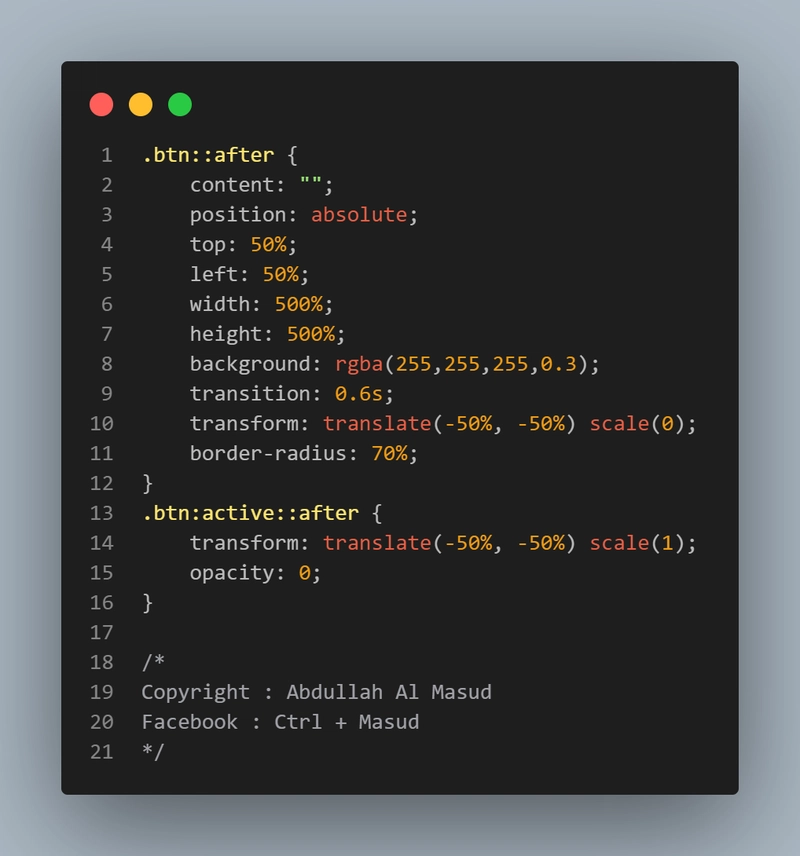Platform Engineering: The Invisible Scaffold Powering Modern Software Development
Discover how Platform Engineering emerged as the cornerstone of scalable, secure, and developer-friendly infrastructure, from fragmented DevOps chaos to cohesive efficiency. Dive into its origins, core principles, and why it’s reshaping tech organizations. The Pre-Platform Engineering Era: Chaos, Silos, and Burnout Before Platform Engineering, software development was a fragmented landscape. Organizations relied on traditional DevOps models where developers and operations teams operated in silos, often using disjointed tools and processes. Developers manually provisioned infrastructure, cobbled together CI/CD pipelines, and battled inconsistent environments (“it works on my machine” syndrome). Operations teams scrambled to maintain uptime, security, and compliance across sprawling cloud-native architectures. The shift to microservices, Kubernetes, and multi-cloud environments amplified these challenges. Teams duplicated efforts, reinventing deployment scripts, monitoring setups, and access controls. Scaling became a nightmare: a startup’s “move fast and break things” ethos clashed with enterprises’ need for governance. Developers spent more time configuring YAML files than writing code, while burnout surged. Security vulnerabilities crept in as compliance checks lagged. The industry needed a paradigm shift—a way to harmonize speed, standardization, and scalability. What Exactly Is Platform Engineering? Platform Engineering is the discipline of building and maintaining internal developer platforms (IDPs)—a curated suite of tools, APIs, and automated workflows that abstract infrastructure complexity. Think of it as a “product” for developers: a self-service portal where engineers can spin up environments, deploy code, monitor services, and enforce policies without diving into low-level cloud configurations. A platform isn’t just Kubernetes or Terraform templates. It’s a cohesive layer integrating CI/CD pipelines, observability, security guardrails, resource management, and documentation. For example, a developer might request a staging environment via a Slack bot, triggering automated provisioning, network policy setup, and vulnerability scanning—all without manual intervention. Who Builds and Owns the Platform? Platform Engineering is spearheaded by cross-functional platform teams, often comprising DevOps veterans, Site Reliability Engineers (SREs), and software architects. These teams act as “product managers” for the IDP, collaborating with developers to identify pain points and iterating on the platform’s capabilities. Critically, platform teams straddle two mandates: Enablement: Empower developers with autonomy through golden paths, templates, and guardrails. Governance: Ensure compliance, cost efficiency, and reliability across the organization. Unlike centralized IT teams of the past, platform engineers embed DevOps principles into the IDP, fostering a culture of shared ownership. What Should a Platform Do? Key Responsibilities Self-Service Automation: Reduce cognitive load with one-click deployments, environment provisioning, and pre-approved toolchains. Standardization: Define “golden paths” for common workflows (e.g., containerization, logging) to minimize fragmentation. Security as Code: Embed compliance checks, secret management, and role-based access into every layer. Cost Optimization: Automate resource scaling, spot instance management, and budget alerts. Observability Integration: Bake in monitoring, logging, and tracing to preempt outages. For instance, Spotify’s Backstage and Airbnb’s Kubernetes operator exemplify platforms that streamline developer workflows while enforcing best practices. Challenges and Pitfalls Platform Engineering isn’t a silver bullet. Common hurdles include: Over-Engineering: Building a “perfect” platform that’s too rigid for developers’ needs. Cultural Resistance: Developers may resent perceived loss of control unless the platform adds clear value. Tool Sprawl: Integrating too many niche tools without cohesion. Success hinges on treating the platform as a product—continuously gathering user feedback and prioritizing ease of use. The Future: AI, GitOps, and Beyond Platform Engineering is evolving with trends like: AI-Driven Platforms: Predictive scaling, automated incident response, and code suggestions. GitOps Dominance: Declarative infrastructure managed via pull requests. Developer Experience (DX) Focus: Metrics like “time to first deploy” become KPIs. Key Takeaways Born from Chaos: Platform Engineering emerged to resolve DevOps fragmentation, burnout, and scalability limits. IDPs Are Products: Successful platforms balance developer autonomy with organizational guardrails. Ownership Matters: Cross-functional platform teams must collaborate, not dictate. Avoid Overhead: Prioritize simplicity and iterate based

Discover how Platform Engineering emerged as the cornerstone of scalable, secure, and developer-friendly infrastructure, from fragmented DevOps chaos to cohesive efficiency. Dive into its origins, core principles, and why it’s reshaping tech organizations.
The Pre-Platform Engineering Era: Chaos, Silos, and Burnout
Before Platform Engineering, software development was a fragmented landscape. Organizations relied on traditional DevOps models where developers and operations teams operated in silos, often using disjointed tools and processes. Developers manually provisioned infrastructure, cobbled together CI/CD pipelines, and battled inconsistent environments (“it works on my machine” syndrome). Operations teams scrambled to maintain uptime, security, and compliance across sprawling cloud-native architectures.
The shift to microservices, Kubernetes, and multi-cloud environments amplified these challenges. Teams duplicated efforts, reinventing deployment scripts, monitoring setups, and access controls. Scaling became a nightmare: a startup’s “move fast and break things” ethos clashed with enterprises’ need for governance. Developers spent more time configuring YAML files than writing code, while burnout surged. Security vulnerabilities crept in as compliance checks lagged. The industry needed a paradigm shift—a way to harmonize speed, standardization, and scalability.
What Exactly Is Platform Engineering?
Platform Engineering is the discipline of building and maintaining internal developer platforms (IDPs)—a curated suite of tools, APIs, and automated workflows that abstract infrastructure complexity. Think of it as a “product” for developers: a self-service portal where engineers can spin up environments, deploy code, monitor services, and enforce policies without diving into low-level cloud configurations.
A platform isn’t just Kubernetes or Terraform templates. It’s a cohesive layer integrating CI/CD pipelines, observability, security guardrails, resource management, and documentation. For example, a developer might request a staging environment via a Slack bot, triggering automated provisioning, network policy setup, and vulnerability scanning—all without manual intervention.
Who Builds and Owns the Platform?
Platform Engineering is spearheaded by cross-functional platform teams, often comprising DevOps veterans, Site Reliability Engineers (SREs), and software architects. These teams act as “product managers” for the IDP, collaborating with developers to identify pain points and iterating on the platform’s capabilities.
Critically, platform teams straddle two mandates:
- Enablement: Empower developers with autonomy through golden paths, templates, and guardrails.
- Governance: Ensure compliance, cost efficiency, and reliability across the organization.
Unlike centralized IT teams of the past, platform engineers embed DevOps principles into the IDP, fostering a culture of shared ownership.
What Should a Platform Do? Key Responsibilities
- Self-Service Automation: Reduce cognitive load with one-click deployments, environment provisioning, and pre-approved toolchains.
- Standardization: Define “golden paths” for common workflows (e.g., containerization, logging) to minimize fragmentation.
- Security as Code: Embed compliance checks, secret management, and role-based access into every layer.
- Cost Optimization: Automate resource scaling, spot instance management, and budget alerts.
- Observability Integration: Bake in monitoring, logging, and tracing to preempt outages.
For instance, Spotify’s Backstage and Airbnb’s Kubernetes operator exemplify platforms that streamline developer workflows while enforcing best practices.
Challenges and Pitfalls
Platform Engineering isn’t a silver bullet. Common hurdles include:
- Over-Engineering: Building a “perfect” platform that’s too rigid for developers’ needs.
- Cultural Resistance: Developers may resent perceived loss of control unless the platform adds clear value.
- Tool Sprawl: Integrating too many niche tools without cohesion.
Success hinges on treating the platform as a product—continuously gathering user feedback and prioritizing ease of use.
The Future: AI, GitOps, and Beyond
Platform Engineering is evolving with trends like:
- AI-Driven Platforms: Predictive scaling, automated incident response, and code suggestions.
- GitOps Dominance: Declarative infrastructure managed via pull requests.
- Developer Experience (DX) Focus: Metrics like “time to first deploy” become KPIs.
Key Takeaways
- Born from Chaos: Platform Engineering emerged to resolve DevOps fragmentation, burnout, and scalability limits.
- IDPs Are Products: Successful platforms balance developer autonomy with organizational guardrails.
- Ownership Matters: Cross-functional platform teams must collaborate, not dictate.
- Avoid Overhead: Prioritize simplicity and iterate based on developer feedback.
- Future-Proofing: AI and GitOps will redefine platforms, but human-centric design remains key.
Platform Engineering isn’t just a trend—it’s the scaffolding enabling tech teams to innovate faster, safer, and smarter.










































































































































































![[The AI Show Episode 144]: ChatGPT’s New Memory, Shopify CEO’s Leaked “AI First” Memo, Google Cloud Next Releases, o3 and o4-mini Coming Soon & Llama 4’s Rocky Launch](https://www.marketingaiinstitute.com/hubfs/ep%20144%20cover.png)


















































































































![[DEALS] The All-in-One Microsoft Office Pro 2019 for Windows: Lifetime License + Windows 11 Pro Bundle (89% off) & Other Deals Up To 98% Off](https://www.javacodegeeks.com/wp-content/uploads/2012/12/jcg-logo.jpg)





































![Is this too much for a modular monolith system? [closed]](https://i.sstatic.net/pYL1nsfg.png)






















































































































_Andreas_Prott_Alamy.jpg?width=1280&auto=webp&quality=80&disable=upscale#)
































































































![What features do you get with Gemini Advanced? [April 2025]](https://i0.wp.com/9to5google.com/wp-content/uploads/sites/4/2024/02/gemini-advanced-cover.jpg?resize=1200%2C628&quality=82&strip=all&ssl=1)













![Apple Shares Official Trailer for 'Long Way Home' Starring Ewan McGregor and Charley Boorman [Video]](https://www.iclarified.com/images/news/97069/97069/97069-640.jpg)
![Apple Watch Series 10 Back On Sale for $299! [Lowest Price Ever]](https://www.iclarified.com/images/news/96657/96657/96657-640.jpg)
![EU Postpones Apple App Store Fines Amid Tariff Negotiations [Report]](https://www.iclarified.com/images/news/97068/97068/97068-640.jpg)
![Apple Slips to Fifth in China's Smartphone Market with 9% Decline [Report]](https://www.iclarified.com/images/news/97065/97065/97065-640.jpg)




































































































































